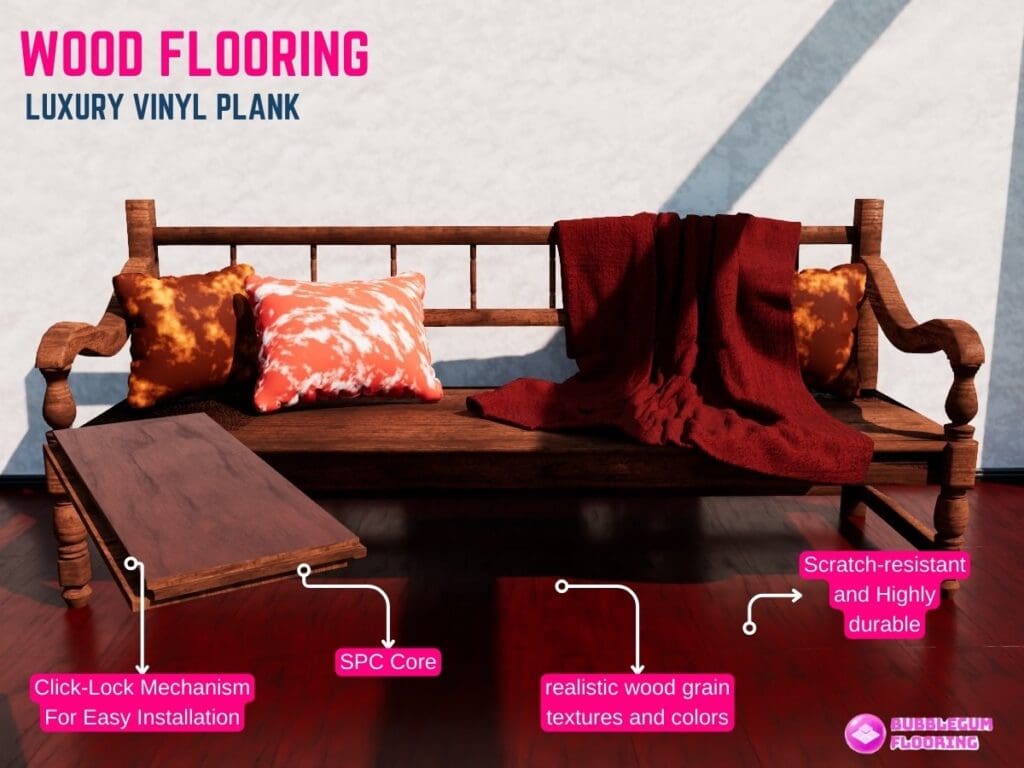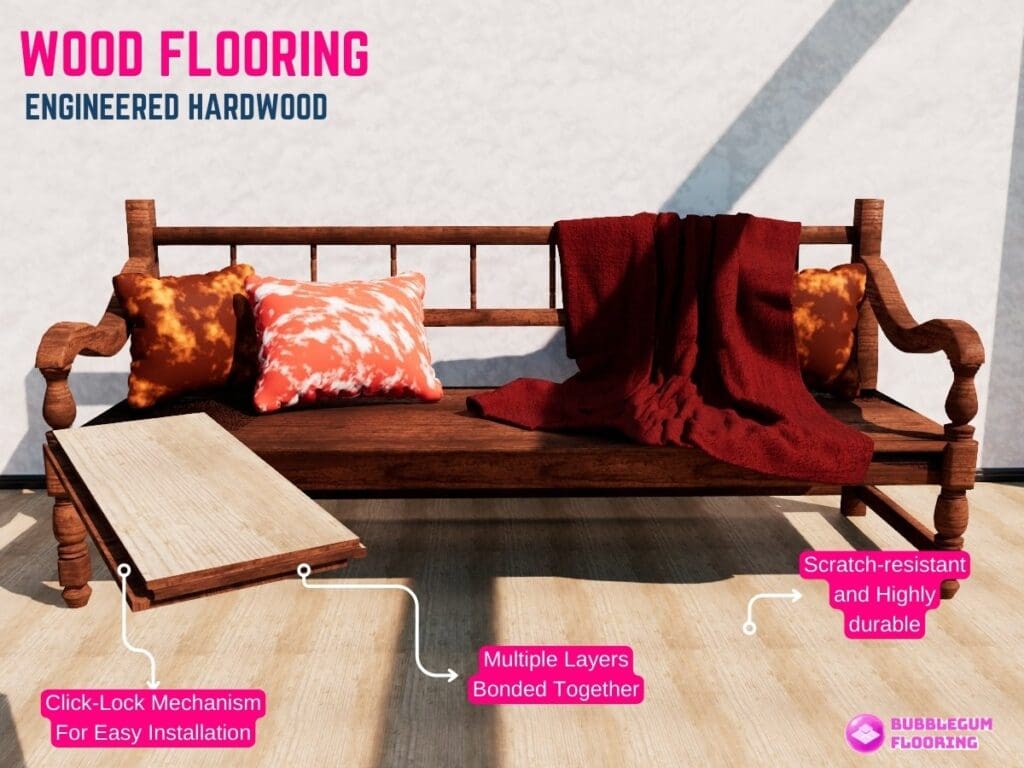Flooring plays a dual role in our homes, serving as both a functional necessity and a key element of aesthetics and comfort. With the shifting seasons, our floors encounter diverse challenges, including temperature changes, moisture exposure, and seasonal activities. Adapting our homes to these seasonal variations requires careful consideration of flooring materials, maintenance strategies, and environmental factors.
In this guide, we explore flooring for all seasons, adapting your home to weather changes. Whether you’re facing temperate weather or hot and humid conditions, this guide provides insights to help you select the most suitable flooring options for your home.
Understanding How Climate Influences Your Home
Weather changes can have a significant impact on various types of flooring materials, influencing their durability, appearance, and functionality. Understanding these effects is crucial for selecting the most suitable flooring options for different areas of your home. Here’s a breakdown of how weather changes can impact flooring:
Temperature Fluctuations
Extreme temperature variations, such as those experienced between seasons or in regions with harsh climates, can affect certain types of flooring materials. For example, hardwood flooring may expand and contract with changes in temperature and humidity, leading to gaps between planks or even warping.
Similarly, laminate flooring may also be susceptible to expansion and contraction, potentially causing it to buckle or separate at the seams.
Humidity Levels
High humidity levels can pose a particular challenge to flooring materials, especially those that are not moisture-resistant. In areas with excessive moisture, such as bathrooms, kitchens, or basements, flooring options like carpet or solid hardwood may be prone to mold, mildew, or rotting.
Additionally, high humidity can cause some types of flooring, such as laminate or engineered hardwood, to swell or warp over time.
Moisture Exposure
Flooring located in areas prone to moisture exposure, such as entryways or mudrooms, must be able to withstand water and other liquids without sustaining damage. Materials like carpet, hardwood, or laminate may be susceptible to water damage if not properly sealed or maintained.
In contrast, flooring options such as ceramic tile, porcelain tile, or luxury vinyl plank are more resistant to moisture and are suitable choices for wet or high-traffic areas.
Seasonal Activities
Seasonal activities, such as tracking in snow, mud, or sand, can accelerate wear and tear on flooring surfaces, particularly in high-traffic areas like entryways or hallways. Flooring materials that are easy to clean and maintain, such as tile or luxury vinyl plank, are well-suited for withstanding the rigors of seasonal activities.
Regular cleaning and maintenance routines can help prolong the lifespan of your flooring and keep it looking its best year-round.
UV Exposure
Exposure to sunlight, especially in areas with large windows or skylights, can cause certain flooring materials to fade or discolor over time. Natural materials like hardwood or laminate may be particularly susceptible to UV damage if not adequately protected. Choosing flooring options with UV-resistant finishes or installing window treatments to minimize direct sunlight can help preserve the color and appearance of your floors.
By understanding these effects, homeowners can make informed decisions when selecting flooring options that are durable, resilient, and suitable for their specific climate and lifestyle needs. Proper maintenance and care are also essential for prolonging the lifespan of your floors and ensuring they remain functional and attractive year-round.
Adapting Your Home to Seasonal Changes
To ensure that your home is prepared for the challenges posed by weather changes, it’s crucial to select flooring materials that can withstand varying conditions while still providing comfort and style. Here are some flooring options suitable for all seasons:
Porcelain Tile
Porcelain tile is a versatile flooring option known for its durability and resistance to moisture. It is an excellent choice for areas prone to high humidity, such as bathrooms, kitchens, and basements. Additionally, porcelain tile is easy to clean and maintain, making it ideal for busy households. With a wide range of colors, patterns, and textures available, you can achieve the look you desire while ensuring long-term durability.
Luxury Vinyl Plank (LVP)
Luxury vinyl plank flooring offers the look of hardwood with superior water resistance, making it an excellent option for homes in regions with high humidity or frequent moisture exposure. LVP is also highly durable, scratch-resistant, and easy to install, making it a popular choice for both residential and commercial spaces.

With advancements in technology, LVP now comes in a variety of realistic wood grain textures and colors, allowing you to achieve the aesthetic appeal of hardwood without maintenance concerns.
Engineered Hardwood
For homeowners who prefer the warmth and elegance of hardwood flooring, engineered hardwood is a suitable option that offers enhanced durability and stability. Unlike traditional hardwood, engineered hardwood consists of multiple layers of wood bonded together under high pressure, making it less susceptible to expansion and contraction due to changes in temperature and humidity.

With proper care and maintenance, engineered hardwood can retain its beauty for years to come, making it a worthwhile investment for any home.
Indoor-Outdoor Carpet
Indoor-outdoor carpeting is a practical choice for areas that experience heavy foot traffic or exposure to the elements, such as entryways, mudrooms, and screened-in porches. Designed to withstand moisture, UV rays, and temperature fluctuations, indoor-outdoor carpeting is easy to clean and maintain, making it an excellent option for homes with pets or young children.
Additionally, indoor-outdoor carpeting comes in a variety of colors and patterns, allowing you to customize your space while ensuring durability and comfort.
Natural Stone
Natural stone flooring, such as granite, marble, or slate, adds timeless elegance and sophistication to any home while offering exceptional durability and resistance to moisture. Natural stone is an excellent choice for areas with high humidity, such as bathrooms or kitchens, as it is impervious to water and easy to clean. Additionally, natural stone flooring retains heat during the colder months, providing warmth and comfort underfoot. With proper sealing and maintenance, natural stone flooring can last a lifetime, making it a valuable investment for your home.
Choosing the right flooring materials and adapting your home to weather changes is essential for maintaining a comfortable and functional living environment year-round. By selecting durable, moisture-resistant flooring options such as porcelain tile, luxury vinyl plank, engineered hardwood, indoor-outdoor carpeting, or natural stone, you can ensure that your home remains beautiful and resilient in the face of seasonal challenges. With proper care and maintenance, your flooring can continue to enhance the comfort and style of your home for years to come.
Seasonal Maintenance Tips for Flooring
Maintaining your flooring year-round is crucial for both aesthetic and practical reasons. Each season brings its own challenges, from spring moisture to winter salt. Here are some concise tips for seasonal maintenance to help you keep your floors in top condition throughout the year.
Spring
- Clean thoroughly: After the winter months, remove salt, sand, and moisture residue from floors to prevent damage.
- Inspect for water damage: Check for any signs of water damage or leaks, especially in areas prone to moisture, like bathrooms and basements.
- Reapply sealant: If you have hardwood or tile floors, consider reapplying sealant to protect against moisture and wear.
Summer
- Minimize direct sunlight: Use window coverings or UV-resistant film to protect floors from sun damage and fading.
- Control humidity: Use dehumidifiers to maintain optimal indoor humidity levels, especially in hot and humid climates.
- Vacuum regularly: Remove dirt, sand, and debris from floors to prevent scratches and wear, especially in high-traffic areas.
Fall
- Prepare for wet weather: Place mats at entryways to trap dirt and moisture from shoes, preventing damage to floors.
- Adjust humidity levels: As temperatures drop, use humidifiers to prevent hardwood floors from drying out and shrinking.
- Inspect for drafts: Seal gaps around doors and windows to prevent cold air from entering and causing floors to become cold and uncomfortable.
Winter
- Protect against moisture: Place waterproof trays or mats near entrances to catch snow, ice, and salt, preventing damage to floors.
- Use rugs and mats: Place rugs or mats in high-traffic areas to protect floors from scratches, moisture, and wear during the winter months.
- Monitor indoor humidity: Keep indoor humidity levels stable to prevent hardwood floors from contracting or expanding due to changes in moisture levels.
General Tips
- Clean spills immediately: Promptly clean up spills to prevent stains and damage to flooring materials.
- Use appropriate cleaning products: Use mild cleaners recommended for your specific flooring type to avoid damage or discoloration.
- Avoid abrasive cleaners: Refrain from using harsh chemicals or abrasive cleaning tools that can scratch or dull flooring surfaces.
- Schedule professional maintenance. Regularly schedule professional cleaning and maintenance services, especially for carpets and hardwood floors, to prolong their lifespan and keep them looking their best.
By following these seasonal maintenance tips, you can protect and preserve your flooring throughout the year, ensuring its longevity and maintaining the beauty and comfort of your home.
Summary
This guide equips homeowners with essential insights into seasonal flooring care, offering tailored advice for maintaining floors year-round. It covers flooring options for different climates, such as hardwood and luxury vinyl plank (LVP) for temperate regions, porcelain tile for hot climates, and engineered hardwood and carpeting for cold areas.
Maintenance tips include thorough cleaning and resealing in spring, sun protection in summer, wet weather preparation in fall, and moisture protection in winter. By understanding climate-flooring dynamics, homeowners can ensure durability and comfort in their homes regardless of the season.


